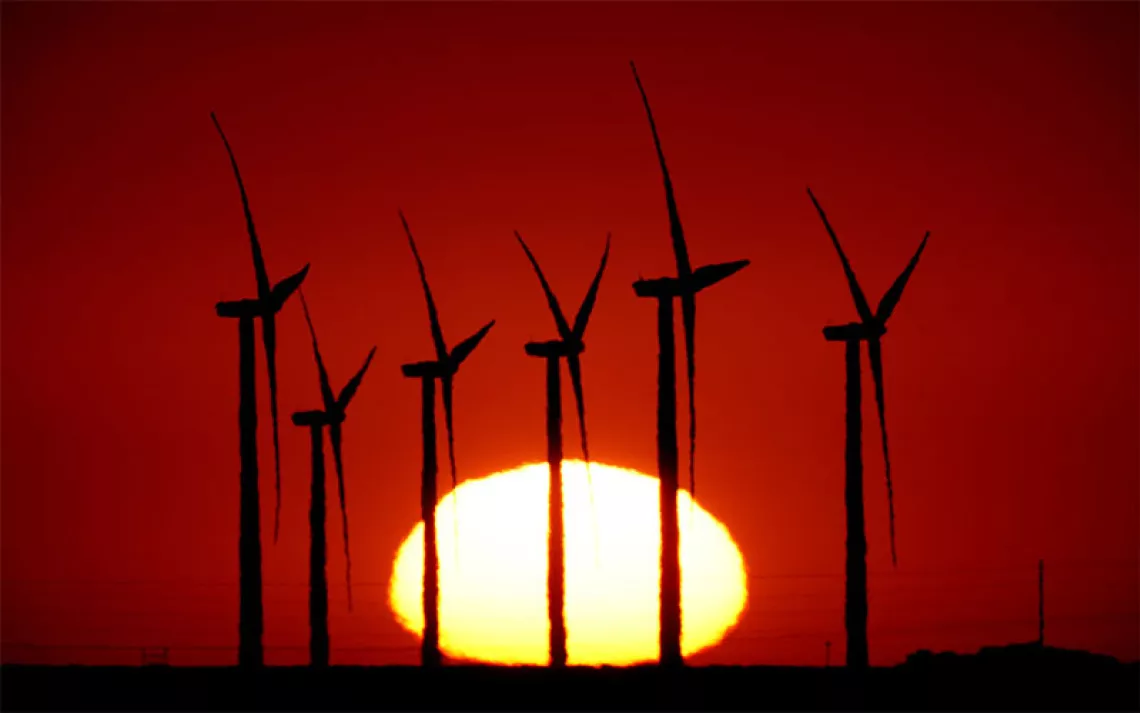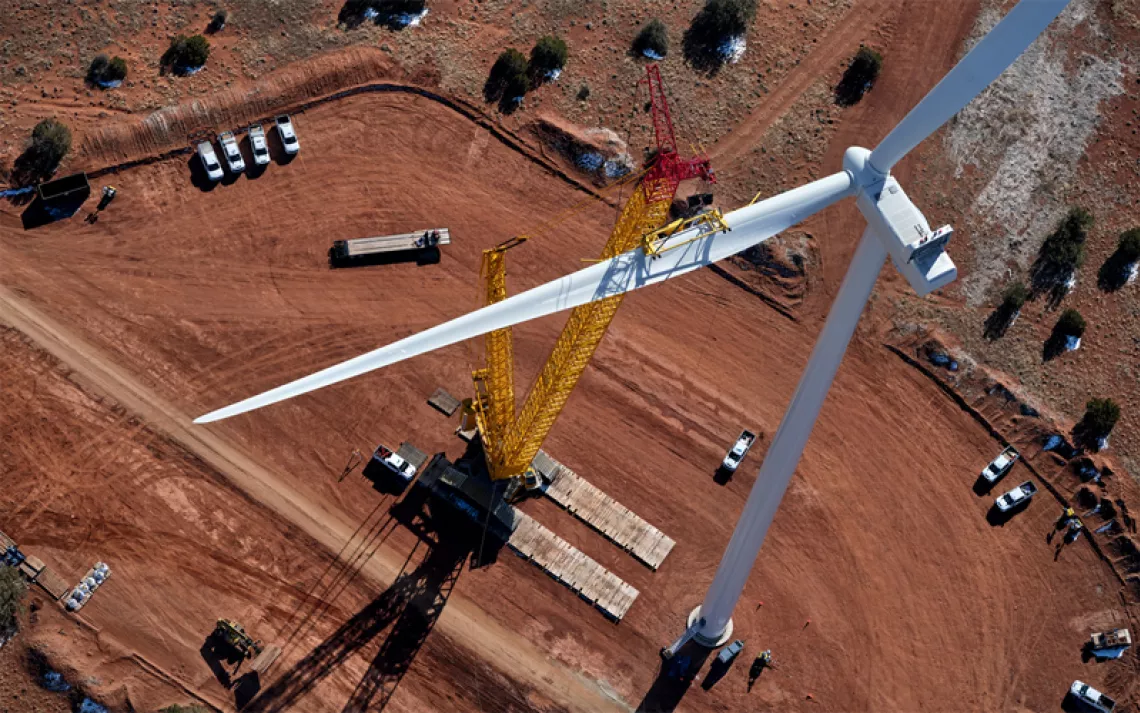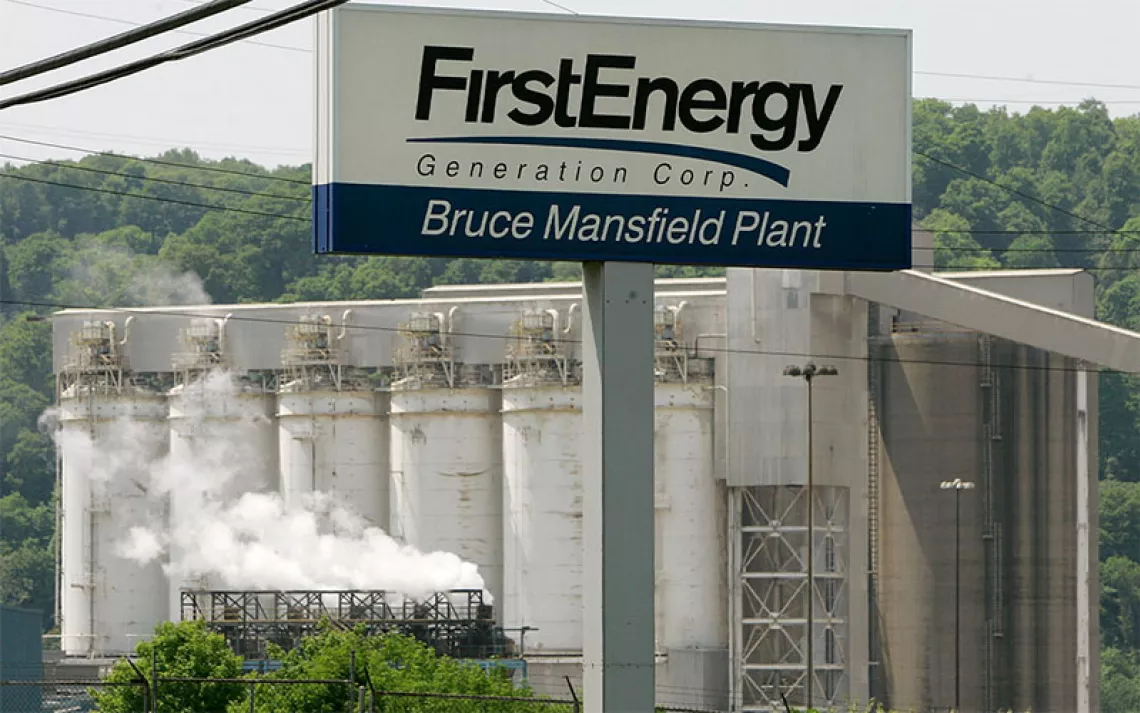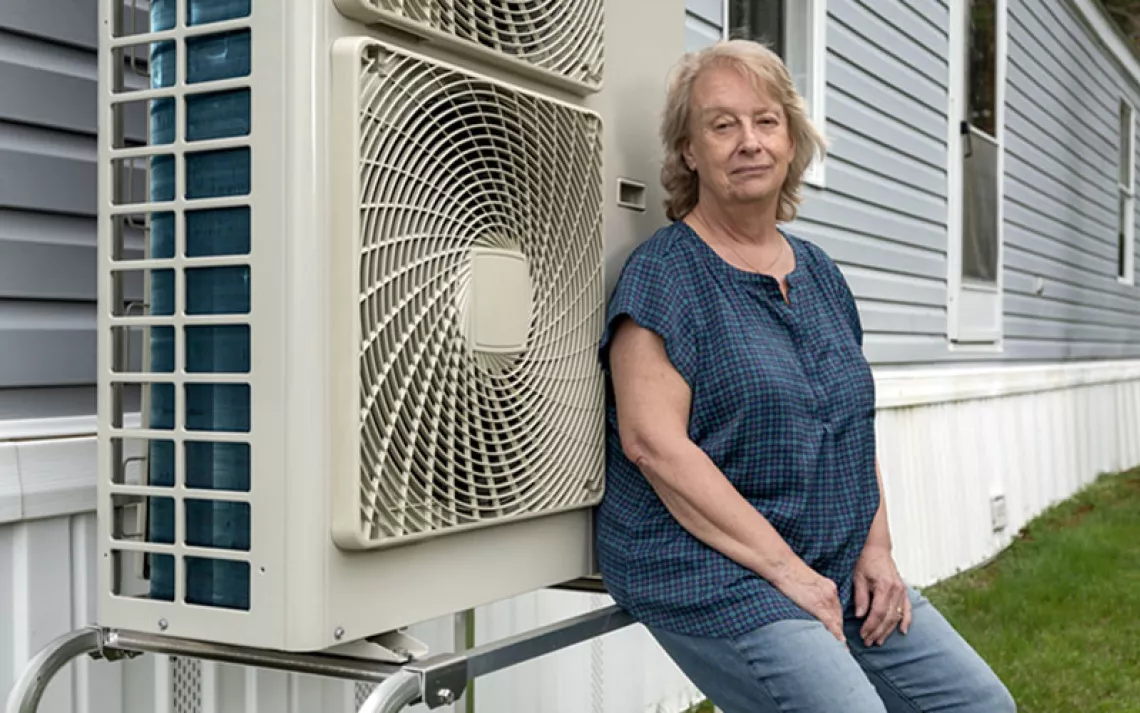As Solar Jobs Increase, Advocates Call for Workforce Equity
The clean energy industry is seeing a boost in employment—and a more diverse pool of job candidates

Photo by Lloyd DeGrane
For many people, the thought of renewable solar energy brings to mind huge solar farms, with glistening panels stretching for miles against a backdrop of cornfields and deserted country roads. But not for Miguel Saucedo. When he looks out across the residential rooftops of Chicago’s Little Village, he sees solar power, and job opportunities to deliver it one household at a time.
Saucedo runs a solar job training program at the Little Village Environmental Justice Organization (LVEJO), which certifies students as solar contractors through a 16-week course. Based in a predominantly Hispanic neighborhood on the city’s southwest side, the program offers solar job training, financial literacy courses, and wrap-around mental health support, with the hopes of making the solar industry more accessible.
When LVEJO’s job training program first launched seven years ago, though, their mission was practically unheard of. “Other than the predominantly Black folks that we were partnering with when we started the organization, the space was predominantly white,” Saucedo recalled. “When we would go to meetings downtown … the room was filled with white people, mostly white men.”
The clean energy workforce is dominated by white men, from solar installers and entrepreneurs to community organizers. But as federal and state agencies scramble to meet ambitious goals for transitioning to clean energy, the industry is struggling to find enough qualified workers to meet demand. Last year, over three-quarters of employers across the energy industry reported difficulty finding qualified workers. And as of right now, there’s still a shortage of nearly half a million workers in the energy construction industry.
These numbers have improved over the past few years. The clean energy sector is adding jobs at more than double the rate of the economy overall, thanks in part to increased funding from influential policies like the Inflation Reduction Act. But in order to sustain renewable power installations—and get this power connected to the grid—the green energy workforce needs to grow even faster. For advocates like Saucedo, spurring this level of workforce growth means that “you've got to hire people that are not the status quo.” The shortage could offer a chance to invest in underrepresented employees, he said, and to create pathways for urban workers to contribute to the solar grid.
“It just gives us an opportunity to be able to have people from the inner cities, people with disabilities, and in an industry that's new … a broader workforce team would make it more successful in the future,” said Tammy Black, founder of the Community Treehouse Center in Detroit. “Everyone needs that type of opportunity.”
The Community Treehouse Center, an organization that provides wrap-around services in the city’s Jefferson-Chalmers neighborhood, recently launched its own self-led solar job training program. Since the program’s first cohort wrapped up in May, Black said she’s been working on plans to build a house dedicated specifically to the training program. She secured funding through Patronicity, the Michigan Economic Development Cooperative’s crowdfunding platform, and supports the center’s current programs through grants.
For community-based training programs, federal grant funding is essential. Some technical colleges and solar companies offer training programs and apprenticeships to prospective workers. The IRA introduced tax incentives for large-scale energy developers that hire a certain number of qualified apprentices. Yet beyond these tax incentives, industry experts said the policy package doesn’t do much to actually provide such apprenticeships, leading to a surge in apprentice demand without an easy remedy, according to a Utility Dive report from February.
As IRA dollars slowly begin to take effect, though, the industry is reaching a “critical point,” said Cynthia Finley of the Interstate Renewable Energy Council. According to the Department of Energy’s latest Energy Employment Report, the trend is beginning to reverse—energy industry jobs grew by 4.2 percent last year compared with 3.8 percent in 2022, and Finley said apprenticeships have been “exploding” in the past year and a half, slowly but surely catching up to worker demand. That’s where grant opportunities come into play. Another key slice of IRA funding is designated to fund job training programs in underserved communities that might not have the same infrastructure behind them as a trade school program.
The DOE’s data shows that this combination of approaches is working, at least to an extent. Several key minority groups remain severely underrepresented in the industry—Black workers make up just 9 percent of the clean energy workforce, while women make up about 26 percent. But in 2023, women held about half of all new jobs created, and Hispanic and Latino workers held a third of new jobs. “We’re not just providing [underserved communities] with clean energy options, but we're talking about diversifying the workforce as well,” Finley said. “I've seen a wider push in resources and focus on both of those things happening at the same time, and I think that's created a lot of momentum.”
The trend varies from state to state. Even for large markets like solar and wind, there’s still no industry standard for what actually makes a worker qualified. Finley said standardizing this could help make future federal policies more effective. But as more and more of this funding hits the market, she said, “the number of folks who are having trouble [finding qualified workers] is coming down.” In 2023, about 40 percent of nonunion employers and 24 percent of union employers reported extreme difficulty in finding qualified workers, down from 2022 rates of 48 percent and 29 percent, respectively.
Saucedo said he’s finally starting to feel the impacts of these investments on the ground. In Illinois, the Climate and Equitable Jobs Act, passed in 2021, gives incentives to employers who hire at least 30 percent “Equity Eligible” workers by 2030, and earmarks job funding for formerly incarcerated people, residents of environmental justice communities, and graduates of the foster care system. While workers from Little Village might have previously struggled to get certified or find solar jobs in Chicago proper, Saucedo said he’s now seeing specific demand for graduates of CEJA-certified training programs—programs that are directly uplifting underrepresented workers.
“Because of state law, now it feels like they’re being more intentional,” he said. “Now it feels like [state dollars are] not just going to white folks who are able to fund a big solar company. There is some diversity and equity and inclusion here, and because of the policy changes, now [employers] are being more intentional about hiring these people.”
 The Magazine of The Sierra Club
The Magazine of The Sierra Club



